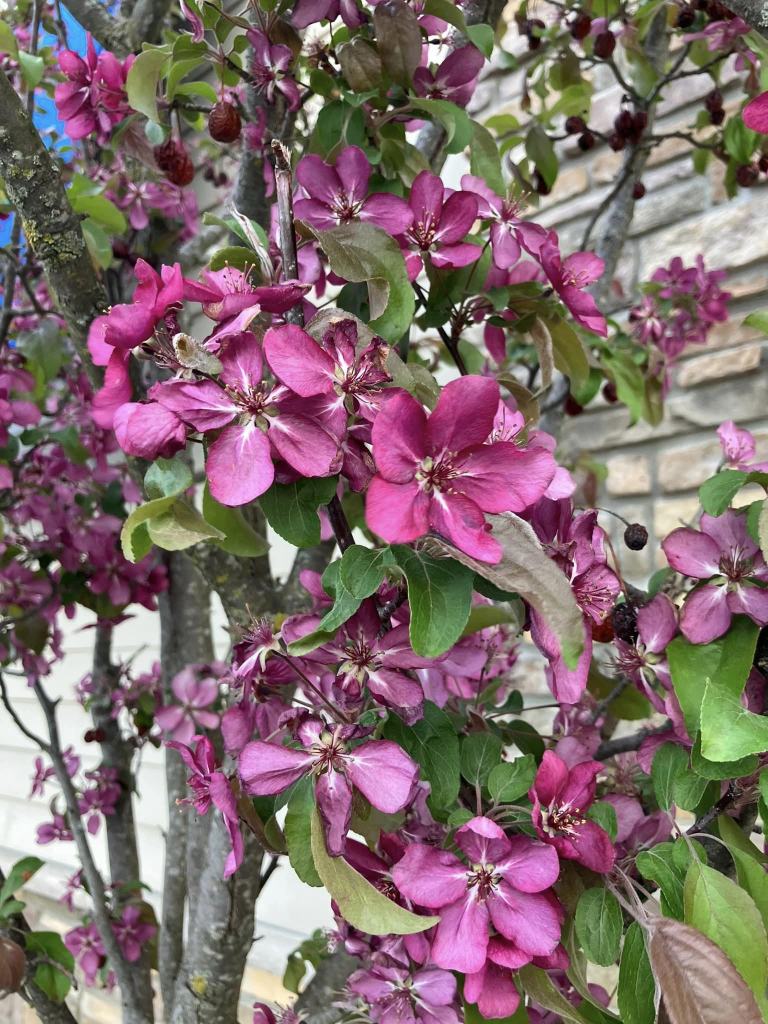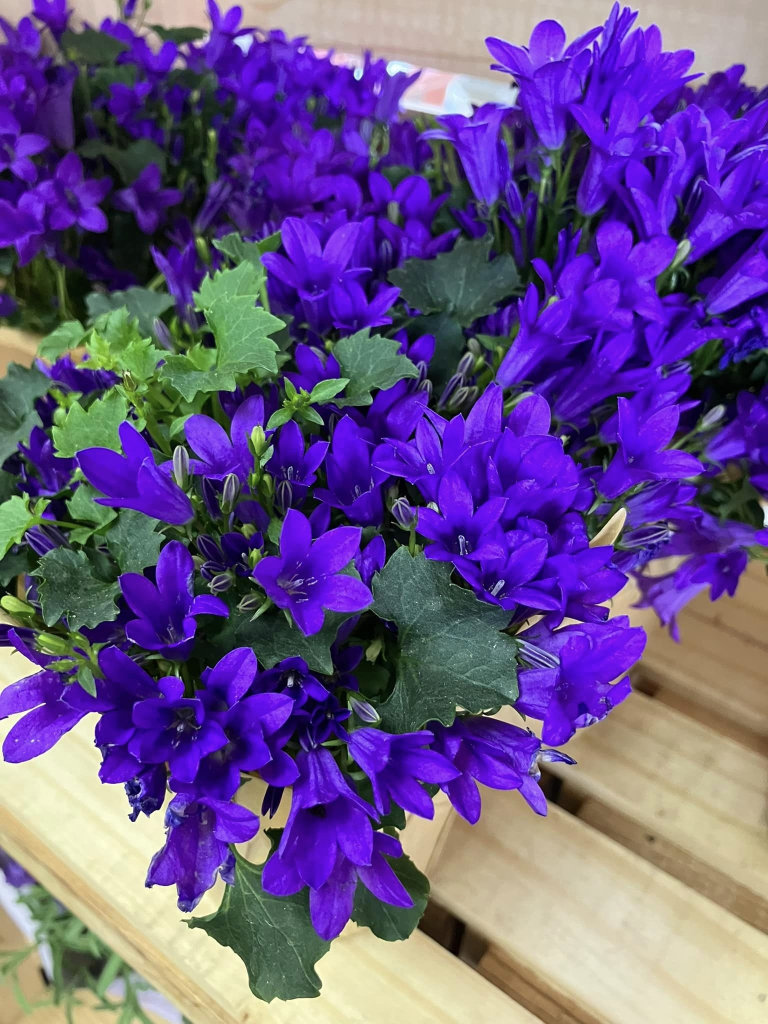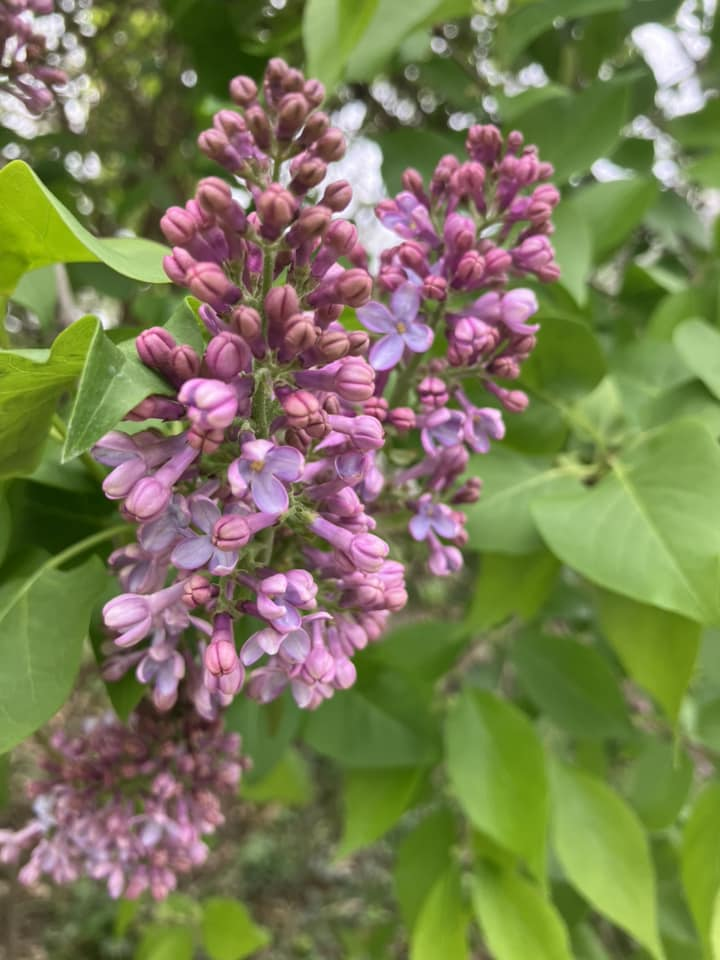Neanderthals died out 40,000 years ago. And that is just a tiny blip of time ago. A whole parallel species of human. I’m enjoying this documentary on Netflix.
“We Show Them Life”
Bisan Owda is a 25 year old Palestinian journalist and filmmaker. She is best known for documenting experiences in Gaza on social media during this time of violence.
This video really moved me. She says, “This is the rule: When they show us death, we show them life,” as she leaves the unending sounds of drones to distribute water.
Mindfulness May: The Right Conditions

As I drive through town or zoom down the road on my bike, I am astounded at how green it is, and quite suddenly. I don’t even have to be traveling somewhere. When I step outside my house, I see that the sides of my yard, recently filled with the dead remains of last year’s wildflowers, are filling in with green day by day. It seems like all of this has taken no time at all.
When the conditions are right, it seems like growth is immanent and almost inevitable.
I think I might like to take that to heart in all sorts of situations. So I’ll say it again:
When the conditions are right, it seems like growth is immanent and almost inevitable.
— Renee Roederer
Mindfulness May: 1001.8 Miles

Welcome to May.
Where I live, May is my favorite month. It’s warm. It’s green. Flowers are blooming only to be replaced by different flowers that are also suddenly blooming. This change is so rapid that it invites my attention. If I don’t stop to smell the lilac bush, I will miss it entirely a week later. If I don’t take a picture of that tulip, I will miss it. My daffodils are already gone.
And since I’m currently co-leading an eight week program on mindfulness (see my post here about Project Uplift) I’ve decided that I’m going to engage this month as Mindfulness May. I want to be present. I want to pay attention. And I invite you to join me.
Yesterday, I had to smile about this plan because I was riding my bike, and I knew I was nearing 1000 miles on the odometer. I was just a couple miles away, and I knew it would come during this ride.
“I want to watch it turn,” I said to myself. “I want to be mindful and notice it.” I also thought about how I would write a blog post about mindfulness and pledge to practice it during the month of May. I imagined that I would snap a photo of 1000 miles on the odometer and put it at the top of the post.
Well, guess what?
I became so enamored with my surroundings in nature and the wind on my face as I rode, that I got to a stop sign, looked down, and that odometer read 1001.8 miles. I missed it!
So the question is,
Was I less mindful because I missed it?
Or
Was I more mindful because my surroundings caught my attention and caused me to miss it?
🙂
A Merry Mindfulness May, friends,
— Renee Roederer
Welcome

Rhythms of welcome.
Once a month, I have the privilege of leading a Sunday morning service at a local church among a community called Parables. This community centers the needs of disabled and neurodivergent community members. Last Sunday, people from a residential community with intellectual and developmental disabilities joined us, and the energy was joy-filled.
Rhythms of welcome.
We always sing a song at the start of our time together.
I am welcome, I am welcome,
I am loved just as I am,
I am welcome, you are welcome,
We are loved just as we are,
Oh Spirit, burn that truth within our hearts.
Rhythms of welcome.
People embraced each other.
A person played the piano.
A person shouted with glee that she gets to go to a baby shower.
Rhythms of welcome.
Mental Health Monday: What is Laughter Yoga?
This Week in Nature
Neato Curiosities: Turkey’s Ancient Underground City
Narrative Theology #1 by Pádraig Ó Tuama

Narrative Theology #1 by Pádraig Ó Tuama
And I said to him
Are there answers to all of this?
And he said
The answer is in a story
and the story is being told.
And I said
But there is so much pain
And she answered, plainly,
Pain will happen.
Then I said
Will I ever find meaning?
And they said
You will find meaning
Where you give meaning.
The answer is in the story
And the story isn’t finished.
Is there a word, phrase, or image that stands out to you in a particular way?
Presence (Part 2) — The Pebble Exercise

Several times a year at the Epilepsy Foundation of Michigan, I have an opportunity to offer Project UPLIFT, a program aimed and supporting individuals who are navigating seizures and mental health challenges. I have the privilege of co-facilitating these sessions alongside Andrea Thomas, a compassionate therapist from the Henry Ford Comprehensive Epilepsy Center. Together, we teach tools of mindfulness, mediation, and relaxation, and midway through the program, we lead participants through an experience called the Pebble Exercise.
The Pebble Exercise is a seemingly simple yet profoundly impactful practice, and it unfolds in a way that often leaves participants both intrigued and grateful. In preparation for this particular session, we invite each person to bring a pebble to our time together without revealing the purpose behind this unconventional request.
When the time comes, Andrea Thomas leads us through a mindfulness reflection centered on pebbles that each person brings. With guidance, everyone is invited to observe the intricate details of these pebbles – their textures, shapes, and colors. Th mindfulness exercise, read by Andrea, also allows people to ponder the origins of the pebbles, imagining the journeys they’ve undertaken to find their way into our palms.
After this, each participant describes their pebbles in detail to the rest of the group and people are always surprised by all that they notice in these seemingly ordinary objects. Then Andrea Thomas then gently prompts us to consider the broader implications of this exercise. She shares, “If we can find such beauty and depth in something as seemingly insignificant as a pebble, something most people would right walk past and never see, imagine how much we can notice in the world around us. And think about how that can invite us to be grateful for the present moment.”
In this way, the Pebble Exercise serves as an invitation to larger, more intentional practices of mindfulness. It encourages us to approach each moment with curiosity, recognizing their details, surprised for what we notice.
—Renee Roederer







